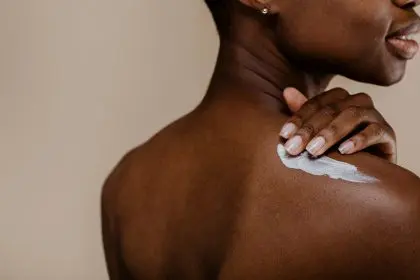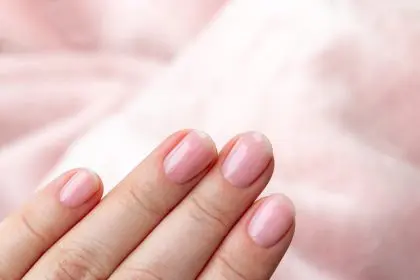Your bathroom probably contains at least three different exfoliating products, each promising to reveal the glowing skin of your dreams. Yet here you are, still dealing with dull skin, clogged pores, or irritation that makes you question every skincare decision you’ve ever made.
The problem isn’t that exfoliation doesn’t work. The issue is that most people are using the wrong type for their skin, applying it incorrectly, or doing it way too often. It’s like using a sledgehammer to hang a picture frame when all you needed was a gentle tap.
Understanding the difference between chemical and physical exfoliants can transform your skin from frustrated and reactive to smooth and radiant. But first, you need to know which camp your skin actually belongs in.
What these exfoliant types actually do
Physical exfoliants work exactly how they sound. They use granules, brushes, or textured surfaces to physically scrub away dead skin cells from your face. Think sugar scrubs, microbead cleansers, or those satisfying facial brushes that make you feel like you’re buffing your skin to perfection.
Chemical exfoliants take a completely different approach. Instead of scrubbing, they use acids to dissolve the bonds holding dead skin cells together. These acids sound scary but work more gently than their physical counterparts when used correctly.
The most common chemical exfoliants include alpha hydroxy acids like glycolic and lactic acid, and beta hydroxy acid, primarily salicylic acid. Each targets different skin concerns and penetrates to varying depths in your skin.
Physical exfoliants for the scrub enthusiasts
Physical exfoliation appeals to people who like immediate, tangible results. You can literally feel the scrub working, and your skin often feels smoother right away. This instant gratification makes physical exfoliants incredibly popular, especially among those new to skincare.
These work best for people with normal to oily skin that isn’t particularly sensitive. If you have thick skin that can handle some friction, physical exfoliants can effectively remove buildup and improve skin texture.
However, physical exfoliation requires a gentle touch and the right products. Avoid anything with jagged particles like crushed walnut shells or apricot kernels, which can create microscopic tears in your skin. Instead, look for round, smooth particles like jojoba beads or gentle options like rice powder.
The key to successful physical exfoliation lies in technique. Use light pressure and circular motions, letting the product do the work rather than scrubbing like you’re trying to remove permanent marker from a whiteboard.
Chemical exfoliants for the science minded
Chemical exfoliants might sound intimidating, but they’re often gentler and more effective than their physical counterparts. They work by dissolving dead skin cells rather than scraping them away, which means less potential for irritation when used properly.
Alpha hydroxy acids work on the surface of your skin, making them excellent for addressing dullness, fine lines, and uneven texture. Glycolic acid penetrates deeper due to its small molecular size, while lactic acid is gentler and more suitable for sensitive skin types.
Beta hydroxy acid, specifically salicylic acid, can penetrate into pores, making it particularly effective for oily and acne prone skin. It helps unclog pores from the inside out, addressing blackheads and preventing new breakouts.
Chemical exfoliants require patience since results develop gradually over weeks rather than immediately after use. But this slow and steady approach often leads to more dramatic and lasting improvements in skin texture and appearance.
Matching exfoliants to your skin type
Sensitive skin types should approach exfoliation cautiously, regardless of which method they choose. If your skin turns red easily or reacts to new products, start with the gentlest options available. Lactic acid or enzyme exfoliants work well for sensitive complexions.
Oily and acne prone skin typically responds well to salicylic acid because it can penetrate through oil to clean out pores. However, some people with oily skin also benefit from gentle physical exfoliation to remove surface buildup.
Dry skin often benefits from alpha hydroxy acids, which not only remove dead skin cells but can also improve moisture retention. Avoid harsh physical scrubs that might further compromise your skin barrier.
Mature skin dealing with fine lines and age spots usually sees the best results from glycolic acid or other alpha hydroxy acids. These ingredients can improve skin texture while stimulating cell turnover for a more youthful appearance.
Common mistakes that sabotage your results
The biggest mistake people make with exfoliation is overdoing it. More is not better when it comes to removing dead skin cells. Over exfoliation can damage your skin barrier, leading to increased sensitivity, redness, and even more breakouts.
Another common error is using multiple exfoliating products simultaneously. If you’re using a physical scrub, you don’t also need a chemical exfoliant on the same day. Your skin needs time to recover between exfoliation sessions.
Many people also choose products that are too harsh for their skin type. Just because a product works for your friend doesn’t mean it will work for you. Your skin’s tolerance level is unique and might require a gentler or stronger approach.
Starting too aggressively is another pitfall. Whether you choose chemical or physical exfoliation, begin with less frequent use and gradually increase as your skin builds tolerance. This approach prevents the irritation that makes people abandon effective products.
Building an exfoliation routine that works
Start slowly with any new exfoliant, using it once or twice per week initially. Pay attention to how your skin responds and adjust frequency accordingly. Some people can handle daily chemical exfoliation, while others need several days between sessions.
Choose one primary method of exfoliation rather than trying to use everything at once. You can alternate between chemical and physical methods, but don’t use them simultaneously unless you have very resilient skin.
Always follow exfoliation with moisturizer and sunscreen. Exfoliated skin is more vulnerable to UV damage, making sun protection even more critical than usual. This step is non negotiable regardless of which exfoliation method you choose.
When to reconsider your approach
If your skin becomes consistently irritated, red, or more problematic after starting an exfoliation routine, it’s time to step back and reassess. Sometimes skin needs a break from active treatments to repair and rebalance itself.
Seasonal changes might also require adjustments to your exfoliation routine. Winter air can make skin more sensitive, while summer humidity might allow for more frequent exfoliation.
Remember that exfoliation is just one part of a healthy skincare routine. It works best when combined with gentle cleansing, appropriate moisturizing, and consistent sun protection. The goal is healthy, functional skin that looks good and feels comfortable, not skin that’s been scrubbed into submission.
The most effective exfoliation routine is one that works consistently with your lifestyle and skin type, not the one that promises miraculous overnight transformations.


















